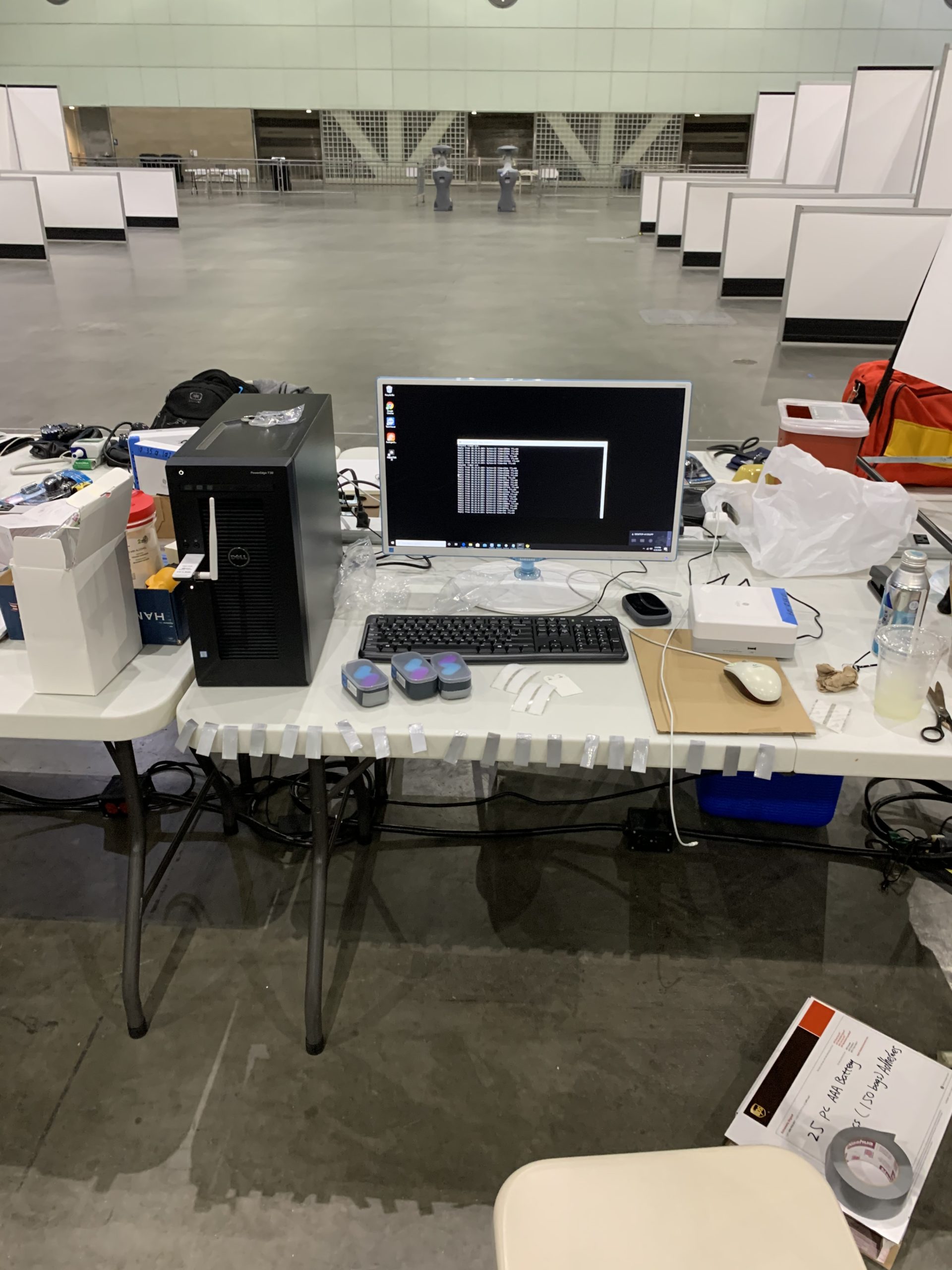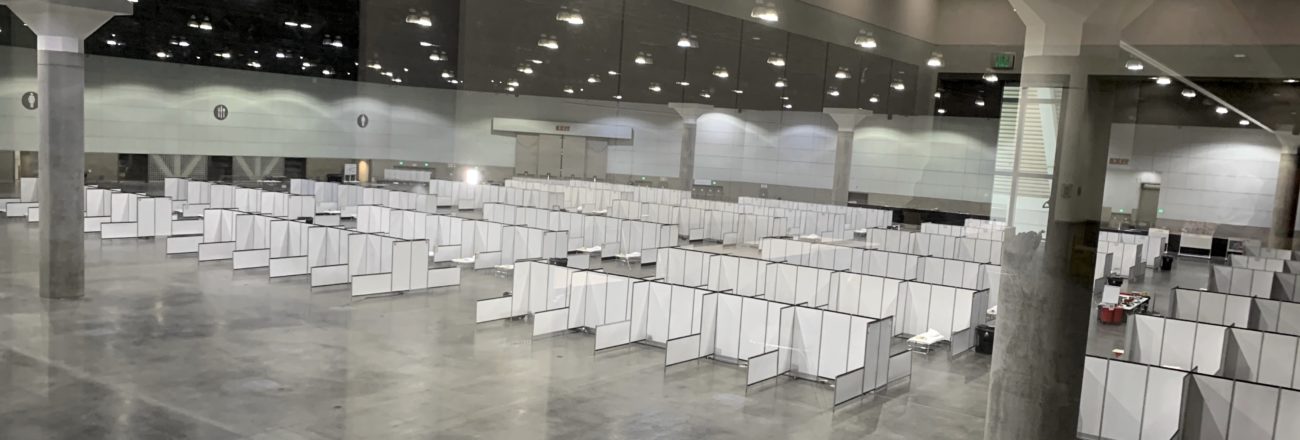Mid-afternoon last Sunday, I happened to see an email pop into my inbox from Walt, our CEO. Naturally curious to see what could possibly be happening on a Sunday… Little did I know, the next day I would be installing “game-changing” technology to help the COVID-19 cause.
Email from Walt:
This is happening very quickly. The County of L.A. is setting up a temporary hospital at the Los Angeles Convention Center. They are contracting now with Vivalnk to do an immediate deployment of 25 sensors, with the ability to expand. I do not think it’s a “huge” job–basically getting a wireless router set up and communicating with his system. I am working with Dr. Li, the CEO of Vivalnk, and the person charged by Mayor Garcetti (Andy Leeka) with setting up the hospital. Vivalnk has the materials but needs help to get them installed ASAP. They need people on site in the next couple of days. If no one else is able to go, I will, but would love help.
My colleague Jeff and I accepted the mission (anything to directly help the COVID-19 cause, seems worthwhile to me). After a couple of conference calls with Dr. Li, Walt, Jeff and I met with folks at VivaLNK’s San Jose office for a quick crash course in installing the sensors. Let me back up for a minute. We are talking about a reusable wireless monitoring patch. This timely technology was deployed at the originating location for COVID-19 in China at 18 different hospitals, impacting over 2,000 coronavirus patients. The patch continuously monitors patient body temperature, sending data via Bluetooth to the respective hospital nurse station for monitoring and responding accordingly. This multi-patient monitoring application alerts staff based on trends and thresholds, identifying the patient and room. More on this technology here.
Jeff and I were both impressed by the ease of use, as we quickly became proficient. The patch is applied to the underarm of the patient, transmitting data first to the charging station, then to a router, and then to the VivaLNK server at the nurse station. Data received by the nurse station includes the patient’s name and current temperature, along with temperature trends (different colors vividly indicate spikes and when care is needed). According to Dr. Li, “The original intent of the remote-monitoring patch was intended for at-home use, so it was designed as a ‘DIY’ tool for anyone to be able to easily use. Now, in light of COVID-19, VivaLNK is working with hospitals across the globe, including in the US, to deploy in traditional and ‘converted’ hospitals.”
Monday we arrived at the Los Angeles Convention Center (LACC), now being referred to as LACC Relief Hospital, intended to serve the overflow of COVID-19 patients from the Los Angeles area. We worked closely with the L.A. Fire Department personnel who were directing the set-up of this particular relief hospital. They quickly connected us with LACC IT staff, so that we installed the routers optimally (for the blue tooth data transmission).

LACC Relief Hospital
Jeff and I activated 60 beds (out of 240). Towards this, we installed the charging stations and routers strategically so that, though only 25 patches were available, 60 beds would be “patch-ready” for ease of operations. The VivaLNK crew in China helped ensure the server and devices were set up properly, while everything operates locally.
Captain of the L.A. Fire Department Stacey Gerlich in reference to Dr. Li’s technology,
“… it’s a game changer, especially during this coronavirus pandemic. Constant monitoring, no cross-contamination because you don’t have to touch the patient, no wasting of supplies (PPE), and no disturbing the patient at 2:00 in the morning to take their temperature.”
As of Tuesday, the technology was fully operational, ready for patients. Good and bad news, due to local hospitals managing capacity, the originally thought “overflow” will likely not occur now. However, given the benefits listed previously (and more here), this wireless patient monitoring technology though once considered a “nice-to-have”, could easily become a “must-have” for both remote and in-hospital use.
More COVID resources available here.

MAP of the beds for activation

Bed set-up

Patch charging device

(To become) local nursing station i.e. “command central”
